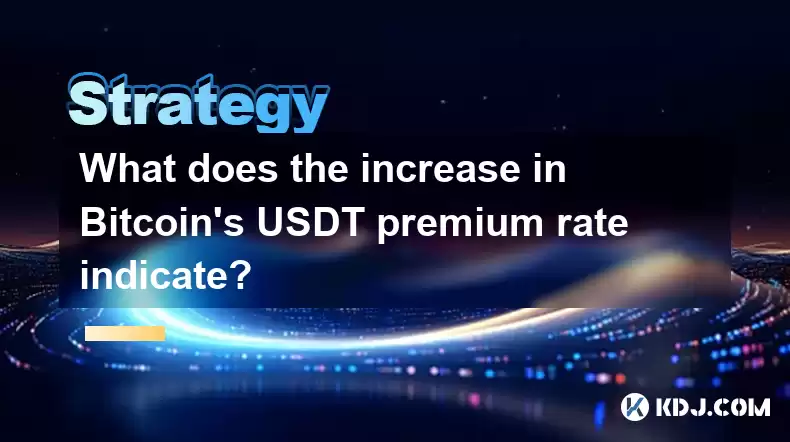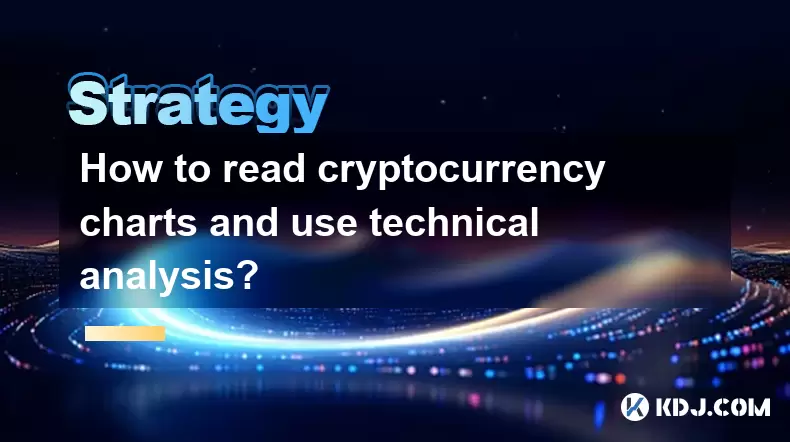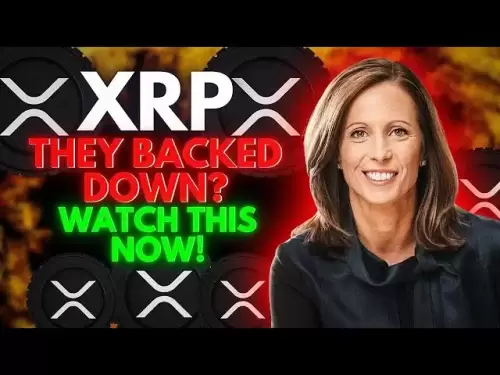-
 Bitcoin
Bitcoin $117500
2.15% -
 Ethereum
Ethereum $3911
6.19% -
 XRP
XRP $3.316
10.79% -
 Tether USDt
Tether USDt $1.000
0.01% -
 BNB
BNB $787.2
2.24% -
 Solana
Solana $175.2
4.15% -
 USDC
USDC $0.9999
0.00% -
 Dogecoin
Dogecoin $0.2225
8.40% -
 TRON
TRON $0.3383
0.28% -
 Cardano
Cardano $0.7868
6.02% -
 Stellar
Stellar $0.4382
9.34% -
 Hyperliquid
Hyperliquid $40.92
7.56% -
 Sui
Sui $3.764
7.63% -
 Chainlink
Chainlink $18.48
10.66% -
 Bitcoin Cash
Bitcoin Cash $582.1
1.88% -
 Hedera
Hedera $0.2601
6.30% -
 Avalanche
Avalanche $23.33
4.94% -
 Ethena USDe
Ethena USDe $1.001
0.02% -
 Litecoin
Litecoin $122.3
2.04% -
 UNUS SED LEO
UNUS SED LEO $8.969
-0.27% -
 Toncoin
Toncoin $3.339
0.86% -
 Shiba Inu
Shiba Inu $0.00001287
4.30% -
 Uniswap
Uniswap $10.43
7.38% -
 Polkadot
Polkadot $3.861
5.08% -
 Dai
Dai $1.000
0.02% -
 Bitget Token
Bitget Token $4.513
3.41% -
 Monero
Monero $267.7
-6.18% -
 Cronos
Cronos $0.1499
4.14% -
 Pepe
Pepe $0.00001110
5.15% -
 Aave
Aave $284.9
8.28%
What does the increase in Bitcoin's USDT premium rate indicate?
An increased USDT premium rate signals strong Bitcoin demand in regions with limited USD access, often indicating bullish sentiment and potential arbitrage opportunities.
Apr 19, 2025 at 01:00 pm

The increase in Bitcoin's USDT premium rate is a significant indicator within the cryptocurrency market, particularly for those closely monitoring Bitcoin's price movements and market dynamics. The USDT premium rate refers to the difference between the price of Bitcoin in USDT (Tether) on specific exchanges, typically those in regions with restricted access to USD, and the global average price of Bitcoin in USD. When this premium rate increases, it suggests several underlying market conditions and sentiments. This article will delve into what an increase in Bitcoin's USDT premium rate indicates, exploring the various factors and implications of this phenomenon.
Understanding the USDT Premium Rate
The USDT premium rate is essentially a measure of the demand for Bitcoin in regions where traditional banking and financial systems are limited or where there are restrictions on converting local currency to USD. Exchanges in these regions, such as those in China or other parts of Asia, often quote Bitcoin prices in USDT rather than USD. The premium rate is calculated as the percentage difference between the Bitcoin/USDT price on these exchanges and the Bitcoin/USD price on major global exchanges like Coinbase or Binance.
Factors Contributing to an Increased USDT Premium Rate
Several factors can contribute to an increase in the USDT premium rate. One of the primary drivers is increased demand for Bitcoin in regions with limited access to USD. When investors in these regions want to buy Bitcoin, they often have to use USDT as an intermediary, which can lead to a higher demand for USDT and, consequently, a higher premium rate.
Another factor is supply constraints of USDT. If there is a shortage of USDT on these exchanges, the price of Bitcoin in USDT can rise, leading to an increased premium rate. This can happen due to various reasons, such as delays in USDT issuance or withdrawal issues.
Regulatory changes can also impact the USDT premium rate. If new regulations make it more difficult to convert local currency to USD or USDT, the demand for USDT on these exchanges can increase, pushing up the premium rate.
Implications of an Increased USDT Premium Rate
An increased USDT premium rate can have several implications for the broader cryptocurrency market. Firstly, it can be an indicator of bullish sentiment in regions with limited access to USD. When the premium rate rises, it often means that investors in these regions are willing to pay more for Bitcoin, suggesting strong demand and potentially bullish market sentiment.
Secondly, an increased premium rate can signal potential arbitrage opportunities. Traders can buy Bitcoin on global exchanges where the price is lower and sell it on exchanges with a higher USDT premium rate, profiting from the price difference. This arbitrage activity can help to eventually balance out the premium rate, but in the short term, it can lead to increased volatility.
Additionally, an increased USDT premium rate can reflect broader market trends. For instance, if the premium rate rises during a period of global market uncertainty, it might indicate that investors in regions with limited access to USD are turning to Bitcoin as a safe haven asset.
How to Monitor the USDT Premium Rate
Monitoring the USDT premium rate involves tracking the price of Bitcoin on both local exchanges that quote in USDT and global exchanges that quote in USD. Here are the steps to effectively monitor the USDT premium rate:
- Choose the right exchanges: Identify the local exchanges in regions with limited access to USD, such as Huobi or OKEx, and compare them with major global exchanges like Coinbase or Binance.
- Track prices: Use tools like CoinMarketCap or CoinGecko to track the price of Bitcoin in both USDT and USD on these exchanges.
- Calculate the premium rate: Calculate the percentage difference between the Bitcoin/USDT price on the local exchange and the Bitcoin/USD price on the global exchange. The formula is: ((Bitcoin/USDT price - Bitcoin/USD price) / Bitcoin/USD price) * 100.
- Monitor trends: Regularly check the premium rate to identify trends and potential shifts in market sentiment.
Case Studies of Increased USDT Premium Rates
Historical data provides valuable insights into how increased USDT premium rates have impacted the market. For instance, during the 2020 global economic uncertainty caused by the COVID-19 pandemic, the USDT premium rate on Chinese exchanges like Huobi and OKEx spiked significantly. This was largely due to increased demand for Bitcoin as a safe haven asset in a region with limited access to USD.
Another notable case was in 2017, when China implemented strict regulations on cryptocurrency trading. The USDT premium rate on Chinese exchanges surged as investors rushed to buy Bitcoin before the regulatory crackdown took full effect. This led to significant arbitrage opportunities and increased market volatility.
The Role of USDT in the Cryptocurrency Ecosystem
USDT, or Tether, plays a crucial role in the cryptocurrency ecosystem, particularly in regions with limited access to USD. It serves as a stablecoin, pegged to the value of the US dollar, providing a more stable alternative to volatile cryptocurrencies like Bitcoin. The increased USDT premium rate highlights the importance of USDT in facilitating cryptocurrency transactions in these regions.
USDT also acts as a bridge between traditional financial systems and the cryptocurrency market. In regions where converting local currency to USD is challenging, USDT provides a way for investors to enter the cryptocurrency market. The increased demand for USDT, reflected in the premium rate, underscores its significance in the global cryptocurrency ecosystem.
Frequently Asked Questions
Q: Can the USDT premium rate be negative?
A: Yes, the USDT premium rate can be negative if the price of Bitcoin in USDT on local exchanges is lower than the price of Bitcoin in USD on global exchanges. This can occur due to various factors, such as an oversupply of USDT on local exchanges or decreased demand for Bitcoin in those regions.
Q: How does the USDT premium rate affect Bitcoin's overall price?
A: The USDT premium rate primarily affects Bitcoin's price on specific exchanges where it is quoted in USDT. While it can lead to increased volatility and arbitrage opportunities, its direct impact on the global average price of Bitcoin is limited. However, significant shifts in the premium rate can influence market sentiment and contribute to broader price movements.
Q: Are there other stablecoins that can impact the premium rate similarly to USDT?
A: Yes, other stablecoins like USDC (USD Coin) and BUSD (Binance USD) can also impact the premium rate in a similar way to USDT. However, USDT remains the most widely used stablecoin in regions with limited access to USD, making its premium rate a key indicator to watch.
Q: How can traders take advantage of the USDT premium rate?
A: Traders can take advantage of the USDT premium rate by engaging in arbitrage. They can buy Bitcoin on global exchanges where the price is lower and sell it on local exchanges with a higher USDT premium rate. This requires careful monitoring of the premium rate and quick execution to capitalize on the price difference.
Disclaimer:info@kdj.com
The information provided is not trading advice. kdj.com does not assume any responsibility for any investments made based on the information provided in this article. Cryptocurrencies are highly volatile and it is highly recommended that you invest with caution after thorough research!
If you believe that the content used on this website infringes your copyright, please contact us immediately (info@kdj.com) and we will delete it promptly.
- Stablecoins, Hong Kong, and On-Chain Finance: Navigating the Regulatory Maze
- 2025-08-08 12:30:12
- Tron's Sell-Off Spurs Altcoin Shift: What's Next for TRX?
- 2025-08-08 08:30:12
- Euler, DeFi, and Coinbase: A New York Minute on the Latest Buzz
- 2025-08-08 12:30:12
- RUVI Presale: Is the Growth Potential Real?
- 2025-08-08 09:10:12
- Sleep Token's US Takeover: Thornhill Rides the 'Even In Arcadia' Wave
- 2025-08-08 08:30:12
- FTT Token's Wild Ride: Creditor Repayments vs. Market Drop - A New Yorker's Take
- 2025-08-08 07:10:12
Related knowledge

How to read cryptocurrency charts and use technical analysis?
Aug 08,2025 at 11:08am
Understanding the Basics of Cryptocurrency ChartsCryptocurrency charts are graphical representations of price movements over time. These charts are es...

How to avoid common crypto investment mistakes?
Jul 13,2025 at 01:35am
Understanding the Risks of Crypto InvestmentInvesting in cryptocurrency can be highly rewarding, but it also comes with significant risks. One of the ...

What is a long-short crypto strategy?
Jul 15,2025 at 10:56am
Understanding the Basics of a Long-Short Crypto StrategyA long-short crypto strategy is an investment approach where traders simultaneously take long ...

What is a long-short crypto strategy?
Jul 11,2025 at 01:28pm
Understanding the Basics of Long-Short Crypto StrategyA long-short crypto strategy is an investment approach where traders take both long and short po...

How to use the RSI indicator for crypto?
Jul 12,2025 at 03:56pm
Understanding the RSI Indicator in Cryptocurrency TradingThe Relative Strength Index (RSI) is a momentum oscillator used to measure the speed and chan...

Is copy trading a good strategy for crypto beginners?
Jul 12,2025 at 08:28am
Understanding Copy Trading in the Cryptocurrency MarketCopy trading is a strategy where novice traders replicate the trades of experienced investors a...

How to read cryptocurrency charts and use technical analysis?
Aug 08,2025 at 11:08am
Understanding the Basics of Cryptocurrency ChartsCryptocurrency charts are graphical representations of price movements over time. These charts are es...

How to avoid common crypto investment mistakes?
Jul 13,2025 at 01:35am
Understanding the Risks of Crypto InvestmentInvesting in cryptocurrency can be highly rewarding, but it also comes with significant risks. One of the ...

What is a long-short crypto strategy?
Jul 15,2025 at 10:56am
Understanding the Basics of a Long-Short Crypto StrategyA long-short crypto strategy is an investment approach where traders simultaneously take long ...

What is a long-short crypto strategy?
Jul 11,2025 at 01:28pm
Understanding the Basics of Long-Short Crypto StrategyA long-short crypto strategy is an investment approach where traders take both long and short po...

How to use the RSI indicator for crypto?
Jul 12,2025 at 03:56pm
Understanding the RSI Indicator in Cryptocurrency TradingThe Relative Strength Index (RSI) is a momentum oscillator used to measure the speed and chan...

Is copy trading a good strategy for crypto beginners?
Jul 12,2025 at 08:28am
Understanding Copy Trading in the Cryptocurrency MarketCopy trading is a strategy where novice traders replicate the trades of experienced investors a...
See all articles

























































































